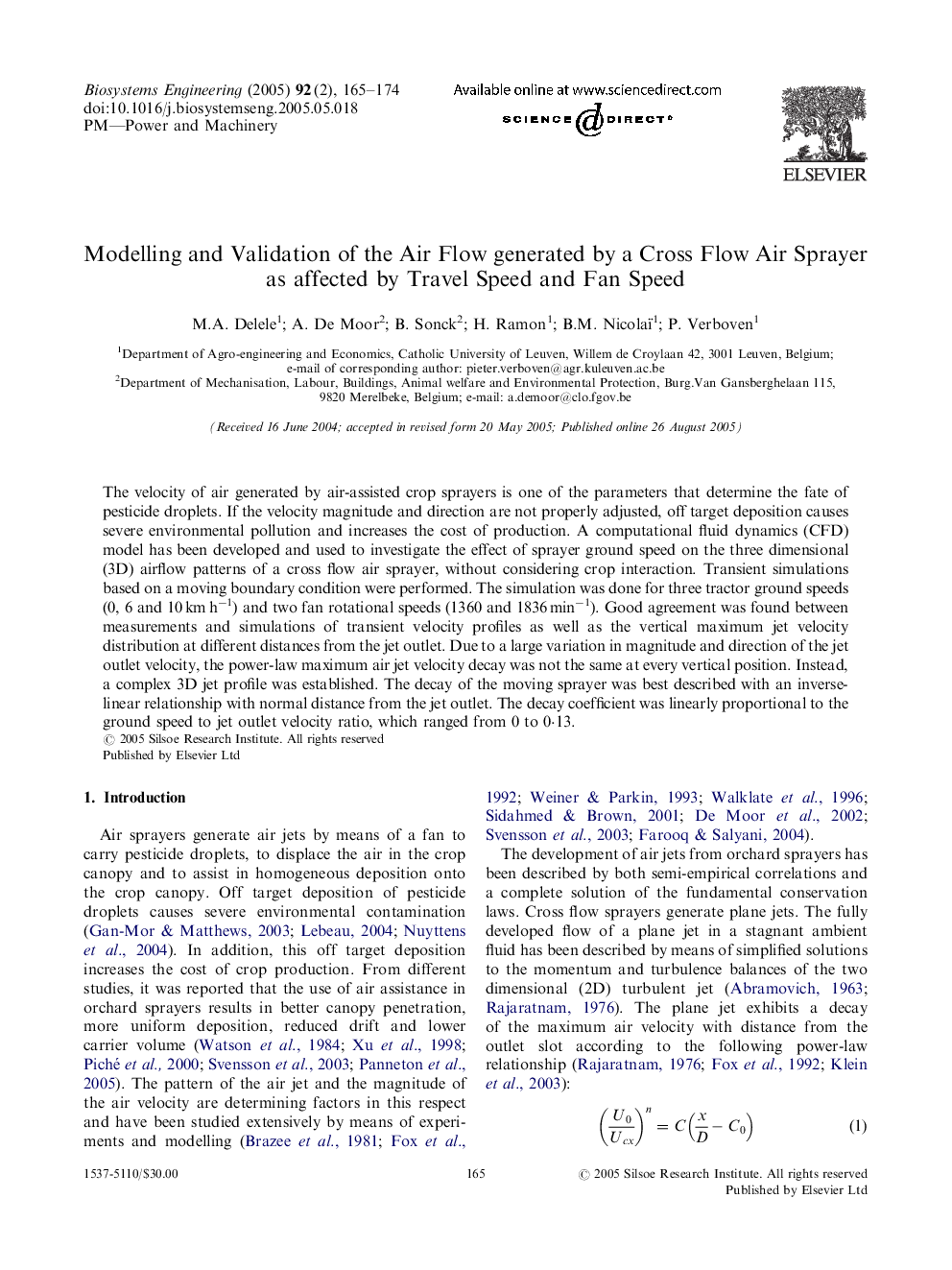| Article ID | Journal | Published Year | Pages | File Type |
|---|---|---|---|---|
| 10679761 | Biosystems Engineering | 2005 | 10 Pages |
Abstract
The velocity of air generated by air-assisted crop sprayers is one of the parameters that determine the fate of pesticide droplets. If the velocity magnitude and direction are not properly adjusted, off target deposition causes severe environmental pollution and increases the cost of production. A computational fluid dynamics (CFD) model has been developed and used to investigate the effect of sprayer ground speed on the three dimensional (3D) airflow patterns of a cross flow air sprayer, without considering crop interaction. Transient simulations based on a moving boundary condition were performed. The simulation was done for three tractor ground speeds (0, 6 and 10 km hâ1) and two fan rotational speeds (1360 and 1836 minâ1). Good agreement was found between measurements and simulations of transient velocity profiles as well as the vertical maximum jet velocity distribution at different distances from the jet outlet. Due to a large variation in magnitude and direction of the jet outlet velocity, the power-law maximum air jet velocity decay was not the same at every vertical position. Instead, a complex 3D jet profile was established. The decay of the moving sprayer was best described with an inverse-linear relationship with normal distance from the jet outlet. The decay coefficient was linearly proportional to the ground speed to jet outlet velocity ratio, which ranged from 0 to 0·13.
Related Topics
Physical Sciences and Engineering
Engineering
Control and Systems Engineering
Authors
M.A. Delele, A. De Moor, B. Sonck, H. Ramon, B.M. Nicolaï, P. Verboven,
